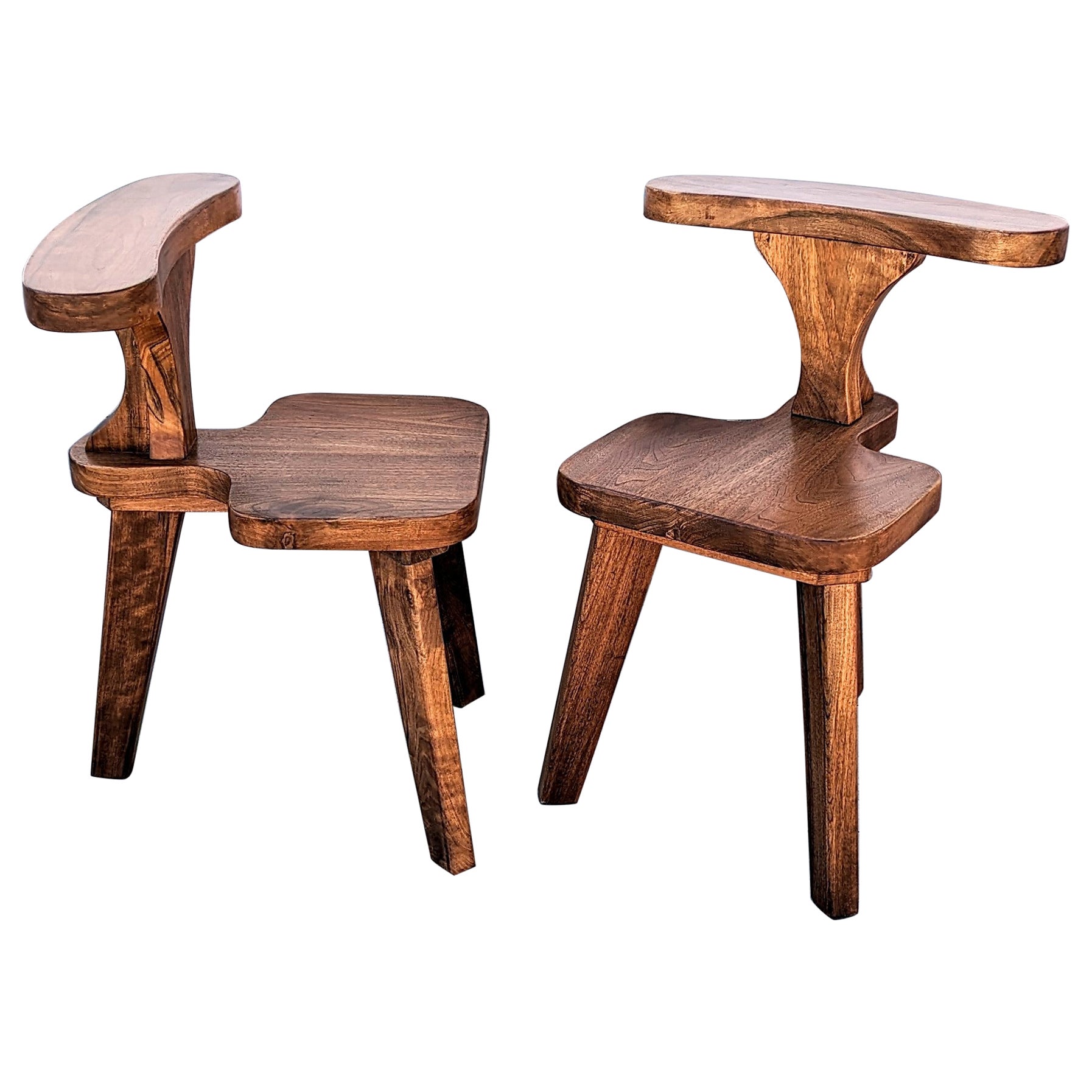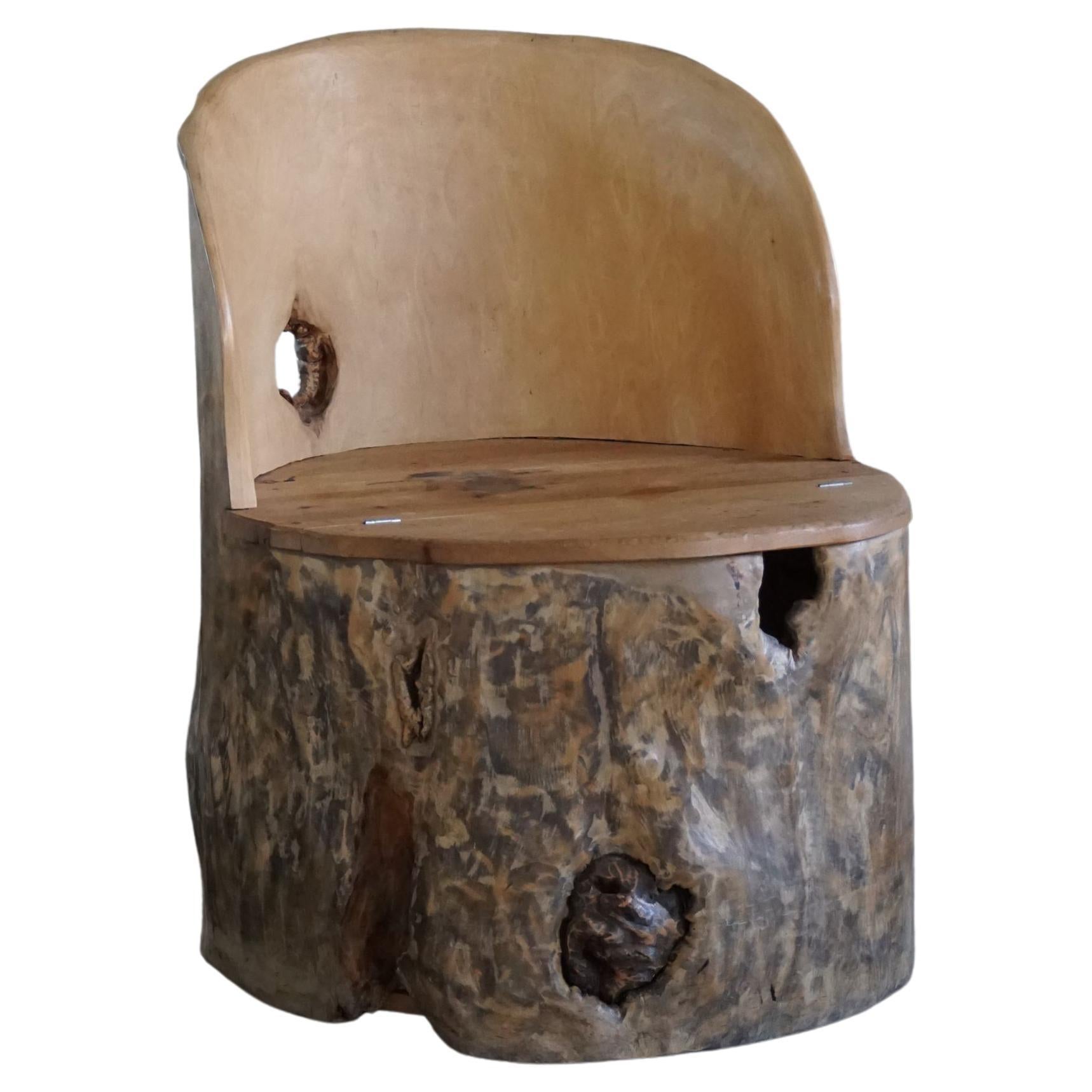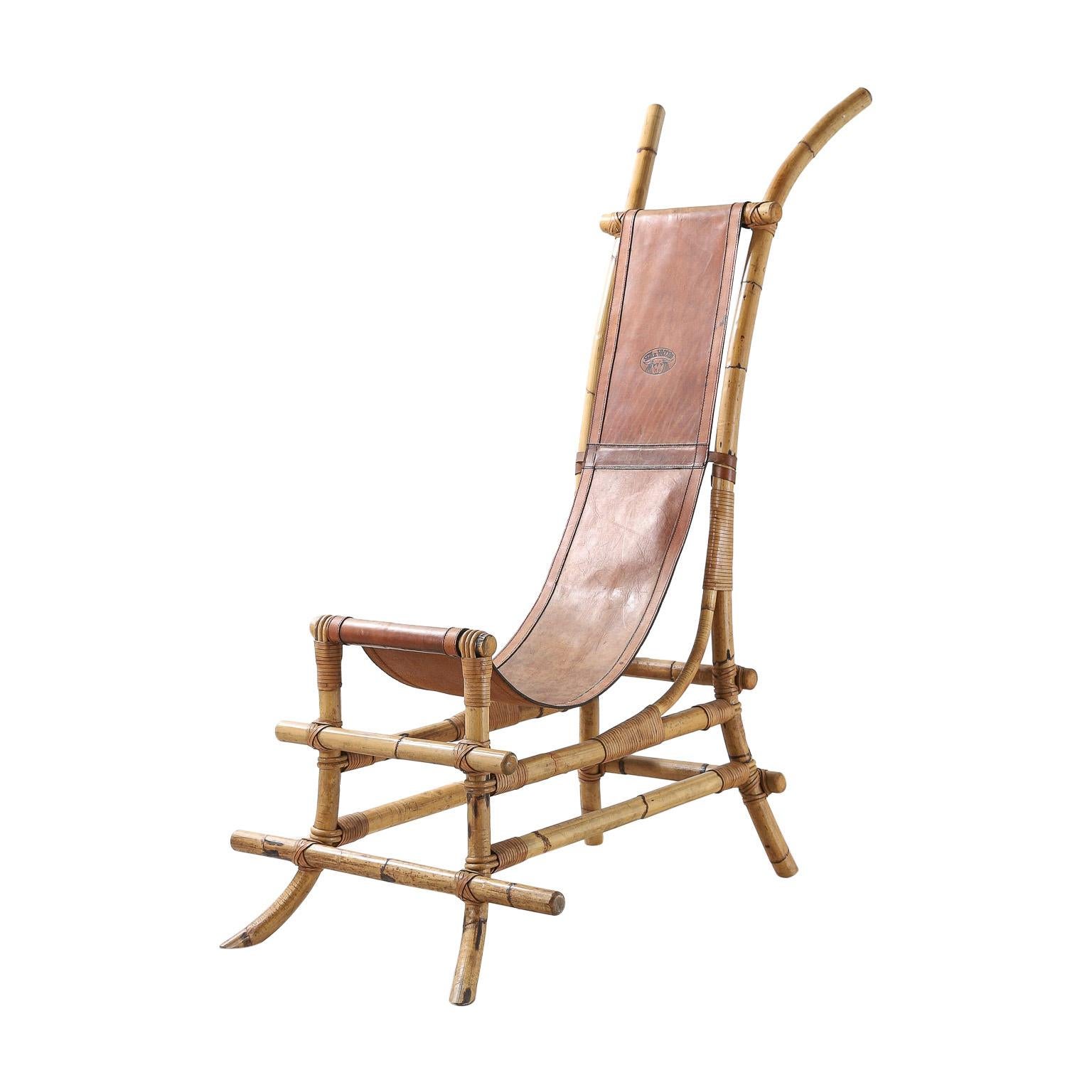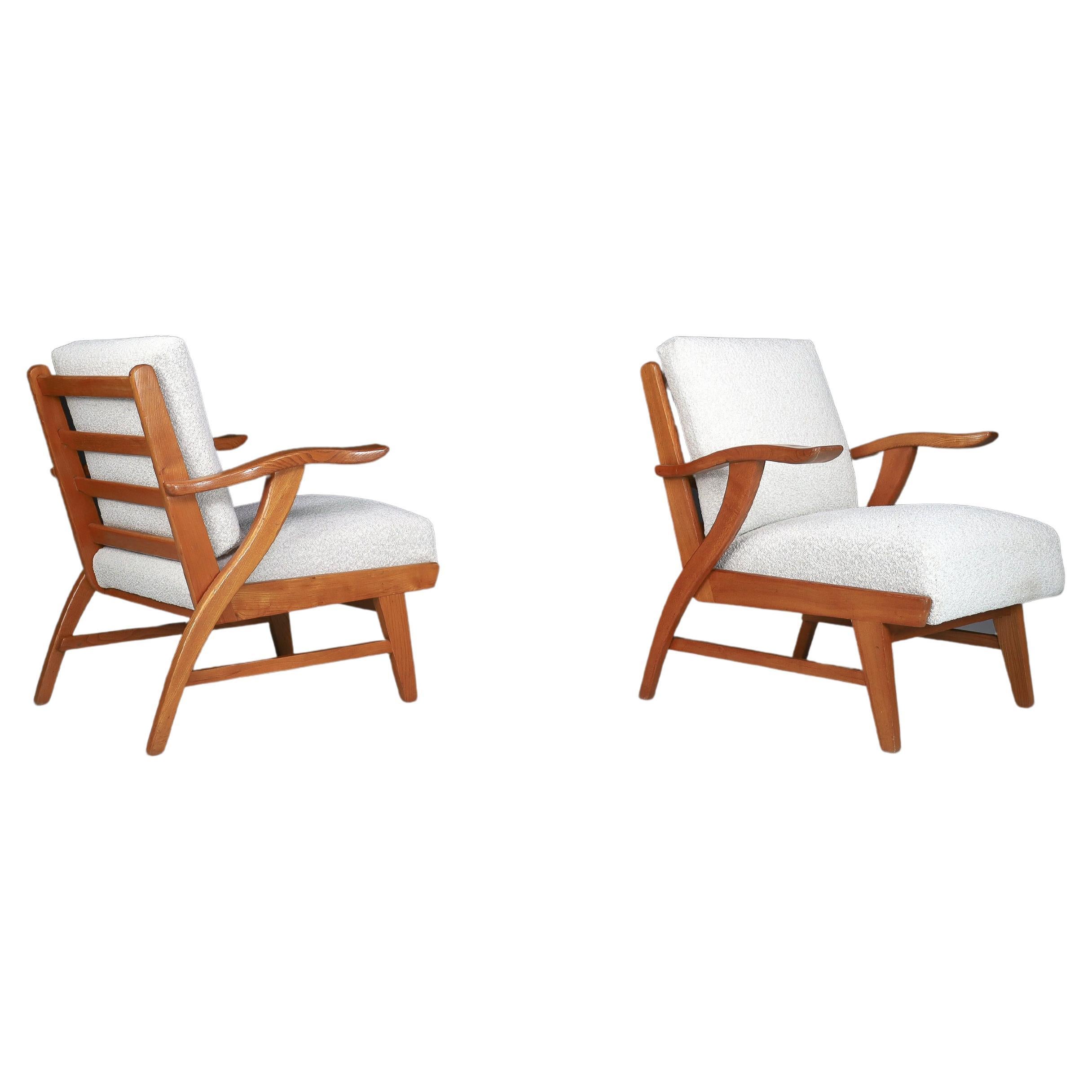Items Similar to Brutalist Sculptural Primitive Chair 1960's-1970's Tansania
Want more images or videos?
Request additional images or videos from the seller
1 of 7
Brutalist Sculptural Primitive Chair 1960's-1970's Tansania
About the Item
Koncz Vilmos (1932 – 2006). He started painting at the age of 30, using the following techniques: charcoal, pastel, oil. He has had solo exhibitions eight times in Budapest, and his works have been featured in seventeen group exhibitions worldwide. He was an experimental creator. Its more than 420 works include glass mosaics, terracotta, copper embossing and furniture carving. After his death, most of his oeuvre was “lost”. A decade and a half passed from painting to the first carvings. Middle Eastern and African culture had a major impact on his further artistic work. Traveled and created in Baghdad, Kuwait, Beirut and Tanzania. He became acquainted with the ancient folk art of the Makonde tribe, with carvings of ebony and ivory, which changed his creative career. When he made an authentic bracelet out of ivory, decorated with African motifs, the members of the tribe welcomed him among themselves. He became the tribe’s "Mister Vili." An exhibition of his painted paintings was held at the Kilimanjaro Hotel. He learned the machining of copper from the Arabs and the making of glass mosaics, and the tricks of jewelry making from the Hindus. He had forty large sculptures erected in various settlements of Hungary, mostly multi-field, made with a circular carving technique. Everything from ornaments on the table to the three-meter-high monument was found in his oeuvre. The Tiszakürt Arboretum also houses two wooden sculptures made of circular carvings: Tasso and the Tanzanian family tree. Donated works of his hometown: the 1956 headboard, the “Jászok” and “Kunok” (Old Hungarian Tribes), the “Flute”, the “Kolompolás” (Ringing the Bell) and the “Winged Altar”. In the 1980s, he also made carvings for the Budapest Zoo and Botanical Garden. His Ars Poetic was: “I do what I love, which drives from within, because I want to leave marks behind that I once existed and perhaps not uselessly” (2002). The term "Brutalist" originated from Le Corbusier’s Cité Radieuse housing development in Marseille, France, designed in the late 1940s. It was awash in béton brut, which translates to "raw concrete.”… The brutalist architecture was popular from the 1950s to the mid-'70s and most often institutionally commissioned: many brutalist structures are schools, churches, public housing, and government buildings. This new wave is not only influenced famous architects but also cabinetmakers, designers, artists and creators around the Globe. This “Brutalist” chair from the 1940’s-1950’s made of hand carved massive wood, decorated with floral and figurative elements, such as trees, houses, humans and the sun.
- Dimensions:Height: 39.37 in (100 cm)Width: 31 in (78.74 cm)Depth: 19.69 in (50.02 cm)
- Style:Brutalist (Of the Period)
- Materials and Techniques:
- Period:
- Date of Manufacture:1960
- Condition:Wear consistent with age and use.
- Seller Location:Rome, IT
- Reference Number:1stDibs: LU985927839342
About the Seller
5.0
Platinum Seller
These expertly vetted sellers are 1stDibs' most experienced sellers and are rated highest by our customers.
Established in 1883
1stDibs seller since 2013
816 sales on 1stDibs
Typical response time: 1 hour
- ShippingRetrieving quote...Ships From: Rome, Italy
- Return PolicyA return for this item may be initiated within 2 days of delivery.
More From This SellerView All
- Brutalist Bar Cabinet 1960' TansaniaLocated in Rome, ITRare and unique brutalist bar cabinet decorated with hand carved bear. Koncz Vilmos (1932 – 2006). He started painting at the age of 30, using the following techniques: charcoal, pastel, oil. He has had solo exhibitions eight times in Budapest, and his works have been featured in seventeen group exhibitions worldwide. He was an experimental creator. Its more than 420 works include glass mosaics, terracotta, copper embossing and furniture carving. After his death, most of his oeuvre was “lost”. A decade and a half passed from painting to the first carvings. Middle Eastern and African culture had a major impact on his further artistic work. Traveled and created in Baghdad, Kuwait, Beirut and Tanzania. He became acquainted with the ancient folk art of the Makonde tribe, with carvings of ebony and ivory, which changed his creative career. When he made an authentic bracelet out of ivory, decorated with African motifs, the members of the tribe welcomed him among themselves. He became the tribe’s "Mister Vili." An exhibition of his painted paintings was held at the Kilimanjaro Hotel. He learned the machining of copper from the Arabs and the making of glass mosaics, and the tricks of jewelry making from the Hindus. He had forty large sculptures erected in various settlements of Hungary, mostly multi-field, made with a circular carving technique. Everything from ornaments on the table to the three-meter-high monument was found in his oeuvre. The Tiszakürt Arboretum also houses two wooden sculptures made of circular carvings: Tasso and the Tanzanian family tree. Donated works of his hometown: the 1956 headboard, the “Jászok” and “Kunok” (Old Hungarian Tribes), the “Flute”, the “Kolompolás” (Ringing the Bell) and the “Winged Altar”. In the 1980s, he also made carvings for the Budapest Zoo and Botanical Garden. His Ars Poetic was: “I do what I love, which drives from within, because I want to leave marks behind that I once existed and perhaps not uselessly” (2002). The term "Brutalist" originated from Le Corbusier’s Cité...Category
Vintage 1960s Tanzanian Brutalist Cabinets
MaterialsWood
- Striking Pair of Original Midcentury Katavolos T Armchairs, 1955By Douglas Kelly, Ross Littell and William KatavolosLocated in Rome, ITWilliam Katavolos in partnership with Douglas Kelley & Ross Littell designed the iconic sling-back T chair in 1952 as model 3LC in Laverne International's sculptural New Furniture se...Category
Mid-20th Century North American Mid-Century Modern Armchairs
MaterialsSteel
- Striking Pair of Original Midcentury Katavolos T Armchairs, 1955By Douglas Kelly, Ross Littell and William KatavolosLocated in Rome, ITWilliam Katavolos in partnership with Douglas Kelley & Ross Littell designed the iconic sling-back T chair in 1952 as model 3LC in Laverne International's sculptural New Furniture se...Category
Mid-20th Century North American Mid-Century Modern Armchairs
MaterialsSteel
- Striking Pair of Original Midcentury Katavolos T Armchairs, 1955By Douglas Kelly, Ross Littell and William KatavolosLocated in Rome, ITWilliam Katavolos in partnership with Douglas Kelley & Ross Littell designed the iconic sling-back T chair in 1952 as model 3LC in Laverne International's sculptural New Furniture se...Category
Mid-20th Century North American Mid-Century Modern Armchairs
MaterialsSteel
- Fine Set of 8 Italian White Decapé Wood Chairs, 1970sLocated in Rome, ITSet of eight Italian white decapè wood chairs with white upholstery seats. Made in Italy 1970'. The wood is in perfect vintage condition. The upholstery is in very good condition onl...Category
Vintage 1970s Italian Mid-Century Modern Dining Room Chairs
MaterialsWood
- Fine Set of 8 Italian White Decapé Wood Chairs, 1970sLocated in Rome, ITSet of eight Italian white decapè wood chairs with white upholstery seats. Made in Italy 1970'. The wood is in perfect vintage condition. The upholstery is in very good condition on...Category
Vintage 1970s Italian Mid-Century Modern Dining Room Chairs
MaterialsWood
You May Also Like
- Brutalist Oak Smoking Chairs, 1960sLocated in L'Escala, ESThis oak brutalist smoking chair dates from the 1960s. Very stable. The design is based on the antique cock fighting chair. We have six in ...Category
Mid-20th Century Persian Chairs
MaterialsOak
- Mid-Century Sculptural Brutalist Norwegian Stump Chair in Solid WoodLocated in Odense, DKSculptural brutalist stump chair in solid wood, probably birch root. Handcrafted in Norway. Unusual shape and a decorative figure for the modern interior. Honorable mentions in...Category
Vintage 1970s Norwegian Scandinavian Modern Chairs
MaterialsBirch
- Italian 1970s Bamboo and Leather Sculptural ChairLocated in London, Charterhouse SquareItalian sculptural chair with bamboo frame, leather cover marked ‘sem il vaccaro’ 1970s.Category
Vintage 1970s Italian Chairs
MaterialsLeather, Bamboo
- Frans Bolscher Sculptural Arm Chair, The Netherlands, 1970By Wendell CastleLocated in Roosendaal, Noord BrabantArmchair by artist Frans Bolscher and made in The Netherlands in his own atelier in 1970. This stunning sculpted armchair is a delight for the eye and is right where art meets design...Category
Vintage 1970s Dutch Mid-Century Modern Armchairs
MaterialsOak
- Brutalist and Primitive ChairLocated in Schellebelle, BEElegant brutalist and antique wooden Chair from England, 19 th Century, very powerful but simple design, good piece of furniture to combine with contemporary furniture, warm and shin...Category
Antique Late 19th Century British Chairs
MaterialsBeech
- Reupholstered Lounge Chairs with Sculptural Ash Wooden Frame France, 1960sBy Guillerme et ChambronLocated in Almelo, NLReupholstered Lounge Chairs with Sculptural Ash Wooden Frame France, 1960s. Set of two lounge chairs in patinated solid ash and Reupholstered bouclé fabric, France, 1960s. The woo...Category
Vintage 1960s French Mid-Century Modern Armchairs
MaterialsFabric, Ash
Recently Viewed
View AllMore Ways To Browse
Vintage Jewellery Making
Primitive Hand Made
I Love Vintage Furniture
Vintage Wood Primitives
1960s Corbusier
1960s Jewellery Designers
French Armchairs 1960s
Vintage Wood Ornament
1970s Sculptural Chairs
1960s Floral Chair
1960s Mosaic
Primitive Old
Brutalist Architecture
Vintage Winged Armchair
Vintage Wing Armchair
Brutalist Wooden Furniture
Used Furniture Budapest
Carved Brutalist





